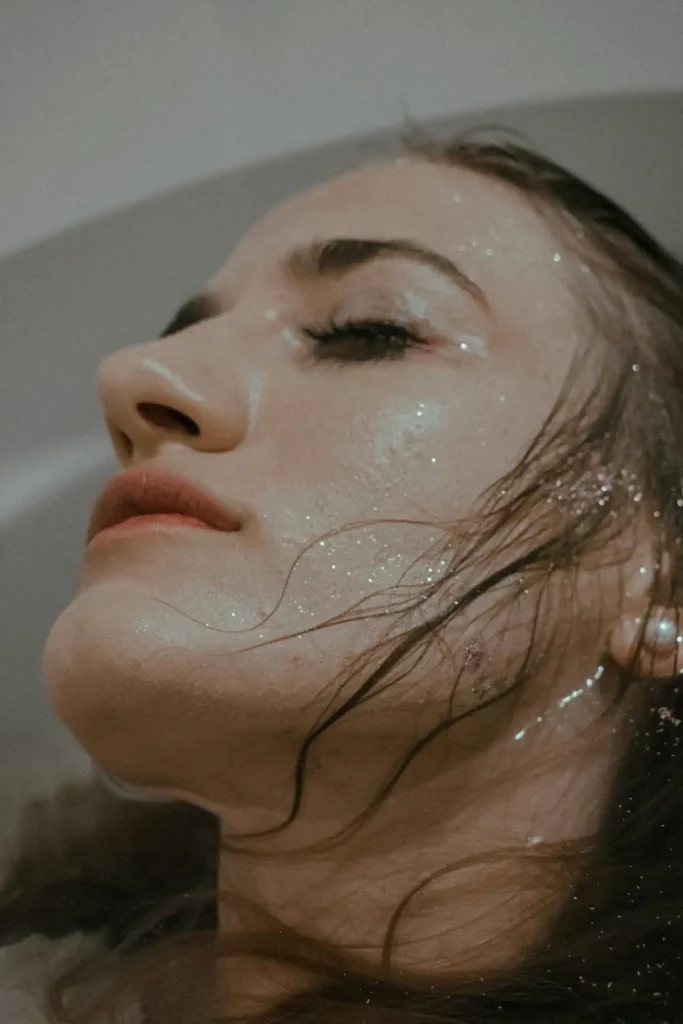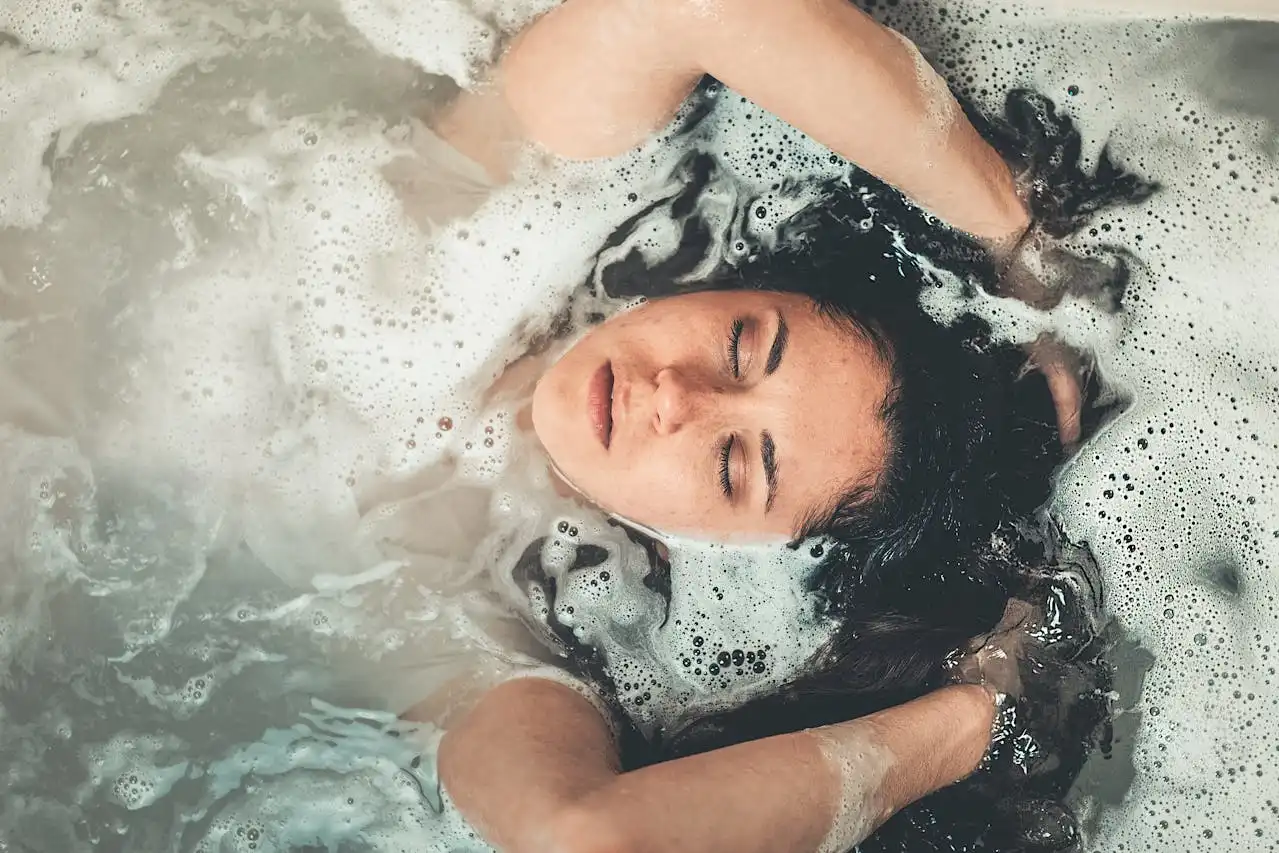How Often Should You Wash Your Hair? Experts Answer
You’ve probably wondered whether you should wash your hair every day or if you can get away with longer stretches between shampoos.
Maybe you’ve heard conflicting advice from friends, family, or beauty influencers about the “right” washing frequency.
The truth is, there’s no universal answer that works for everyone.
Experts agree there’s no single recommendation for how often people should shampoo, and you may not need to wash as frequently as you think.
Your Hair Type Determines Everything

Washing your hair isn’t a one-size-fits-all process, according to hair care professionals.
Your individual hair type, texture, and scalp condition play the biggest roles in determining your ideal washing schedule.
Fine hair becomes greasy more quickly, requiring more frequent washing, while thicker, coarser hair can go much longer without a wash.
This happens because oil travels differently through various hair textures. Oil travels more easily down straight, fine hair, which is why it tends to appear oily faster than curly hair.
Understanding this basic principle helps you create a personalized routine that works for your specific needs.
Your scalp produces natural oils called sebum, which provide moisture and protection for both your scalp and hair strands.
The key is finding the right balance between removing excess oil and dirt while preserving enough natural moisture to keep your hair healthy.
Fine and Straight Hair: Daily to Every Other Day
If you have fine, straight hair, you’ll likely need to wash more frequently than people with other hair types.
People with finer hair have more oil glands on their scalp, and their hair therefore becomes greasy faster.
Wash your hair every day to prevent buildup, unless you have very long hair or it’s very coarse or curly, recommends Dr. King, a board-certified dermatologist.
This daily routine helps prevent your hair from looking limp and greasy. The key is choosing gentle, sulfate-free formulas that cleanse without stripping.
Many people worry that washing daily will damage their hair, but that’s not true if you are using high quality shampoos and conditioners and then gently drying the hair.
For fine hair, you can alternate between regular washing and using dry shampoo to extend your style.
Apply dry shampoo to your roots before bed to absorb excess oil overnight, giving you more styling options the next day.
Medium Texture Hair: Every 2-3 Days
If your hair isn’t super fine but also isn’t particularly thick or coarse, you fall into the medium texture category.
For medium textured hair, shampooing every 2-4 days is usually enough, or whenever you feel your hair needs it.
If your hair isn’t particularly greasy or dry, washing every two to three days is a good rule of thumb.
This frequency allows your scalp to produce beneficial natural oils while preventing excessive buildup.
Pay attention to environmental factors that might affect your washing schedule.
You take your hair and scalp to the same places you take your face and they get just as dirty, especially if you live in a polluted urban environment.
Your lifestyle also matters. If you exercise regularly or work in environments that expose your hair to dirt and sweat, you might need to wash closer to every other day rather than every three days.
Wavy and Curly Hair: 1-2 Times Per Week
Those with wavy and curly hair can adopt a less frequent washing schedule—depending on your scalp condition, one to two times per week is generally ideal.
This is because waves and curls tend to be drier than straight hair. Shampoo every four to five days works well for most wavy hair types.
Washing two to three times a week is a good starting point for curly hair, as this frequency allows for adequate cleansing while maintaining hydration.
The structure of curly hair makes it harder for natural oils to travel from your scalp down the hair shaft.
This means your ends can become dry while your roots might still produce oil. Over-washing may leave it dry, brittle, or frizzy.
Consider co-washing (washing with conditioner only) between shampoo sessions. This gentle cleansing method helps remove some buildup while adding moisture to your curls.
Many people with wavy and curly hair find this technique helps maintain their curl pattern and reduces frizz.
Coily and Thick Hair: Once Per Week or Less
The American Academy of Dermatology recommends that to keep Black hair healthy, you should wash your hair once a week or every other week.
This recommendation applies to most coyly and very thick hair textures.
The twists and turns of the hair mean that the natural oils don’t coat the hair as easily as the other hair types.
Because of this structure, people with coyly hair often experience dryness at the ends while the scalp may still produce adequate oil.
For people with thick, coarse hair, you may only need to shampoo from one to every two weeks – especially if you have very tight curls, which can become damaged with over-washing and styling.
When you do wash coily hair, focus on gentle cleansing and follow up with deep conditioning treatments. Hot oil treatments twice a month can help maintain moisture levels and improve manageability.
Special Considerations for Your Washing Routine

Activity Level and Lifestyle
If you are someone who sweats more when you are active, it may increase how often you need to shampoo.
However, you don’t necessarily need to wash after every workout. Sometimes rinsing with water and using dry shampoo can refresh your hair without full cleansing.
Sweat and humidity can make hair oilier and require washing every 1-2 days in summer.
Seasonal changes often affect how frequently you need to wash, with many people washing more often in hot, humid weather.
Age and Hormonal Changes
Teenagers and adults in their 20s to 30s produce more sebum than older adults, which is why hair tends to become drier with age. As you get older, you might find you can go longer between washes.
Hormonal fluctuations from pregnancy, menopause, or medical conditions can also affect your scalp’s oil production. Be prepared to adjust your routine during these times.
Chemical Treatments and Styling
If it’s styled with keratin treatment or you have a blow-out, you may not need to or want to wash more than once a week and put more stress on your hair.
Color-treated, chemically processed, or heat-damaged hair typically needs less frequent washing.
Chemical treatments, bleach, hair dye, and/or consistent heat-styling can eventually leave your hair cuticles rough and broken, resulting in hair that’s dry, dull, and brittle.
In these cases, washing only a few times per week with sulfate-free, protein-based shampoos helps maintain hair strength.
Signs It’s Time to Wash
Listen to what your hair and scalp tell you. If hair is visibly oily, scalp is itching, or there’s flaking due to dirt, those are signs it’s time to shampoo.
Other indicators include:
- Hair looks limp or feels heavy
- You notice an unpleasant odor
- Your scalp feels uncomfortable or irritated
- Product buildup makes styling difficult
- Your hair lacks its usual bounce or movement
Regardless of how your hair feels, though, don’t go longer than 14 days, ever, advises Dr. Lamb from Mount Sinai. Even the driest hair types need regular cleansing for scalp health.
The Dangers of Overwashing and Underwashing
Finding the right balance prevents both overwashing and underwashing problems.
Shampooing too often may lead to hair that’s less than lush because shampoo traps oils, so if you do it too frequently, you may dry your hair out, leaving it prone to breakage.
Signs you’re overwashing include:
- Dry, brittle hair that breaks easily
- Increased frizz and tangles
- Scalp irritation or excessive dryness
- Color fading faster than expected
- Hair that feels rough or straw-like
On the flip side, under-washing creates its own problems. If you don’t cleanse your scalp frequently, excess oils, dirt, pollution and dead skin cells are allowed to build up.
This buildup can cause itching, irritation, visible flakes, and even affect hair growth.
If you don’t wash it enough, sebum and product build-up can accumulate, ultimately suffocating your hair follicles.
In extreme cases, this can lead to hair loss or scalp conditions that require medical treatment.
Choosing the Right Products for Your Routine
The products you use matter just as much as how often you wash. Sulfate-free shampoos provide gentler cleansing for most hair types, especially if you wash frequently or have chemically treated hair.
For oily hair, look for clarifying shampoos that remove buildup without over-stripping. Use these once or twice a week, alternating with gentler formulas.
Dry or damaged hair benefits from moisturizing shampoos with ingredients like hyaluronic acid, natural oils, or proteins. Follow up with deep conditioning treatments to maintain moisture balance.
Those with dandruff or scalp conditions should use specialized shampoos containing ingredients like zinc pyrithione, ketoconazole, or salicylic acid as recommended by dermatologists.
Making Adjustments for Your Unique Needs
Listening to your hair and looking out for how it reacts to changes in routine is really key to create the perfect curly regime. This principle applies to all hair types, not just curly hair.
Start with the general recommendations for your hair type, then adjust based on:
- How your hair looks and feels
- Seasonal changes in weather
- Changes in your exercise routine
- New medications or health conditions
- Different styling products or techniques
The bottom line is, there’s no one-size-fits-all approach to your hair care regimen. What works for your best friend might not work for you, and that’s completely normal.
Extending Time Between Washes

Dry shampoo can help you go longer between washes when used correctly. Apply it to clean hair before you need it, focusing on your roots where oil tends to accumulate first.
Dry shampoo isn’t a replacement for real shampoo, but it’s an excellent tool for maintaining your style and absorbing excess oil.
Other techniques include:
- Sleeping on silk or satin pillowcases to reduce friction
- Using hair accessories to create new styles
- Applying leave-in treatments to refresh your hair’s appearance
- Changing your part or trying different styling techniques
Building Your Personal Routine
Start by identifying your hair type and texture honestly. Consider your lifestyle, including how much you exercise, your work environment, and the climate where you live.
Begin with the expert recommendations for your hair type, then pay attention to how your hair responds. Keep notes about what works and what doesn’t, including seasonal changes.
Remember that your needs may change over time due to age, health changes, or different hair treatments. Stay flexible and willing to adjust your routine accordingly.
Conclusion
The “healthiest” system for hair washing completely depends on your hair type.
Listen to your hair, start with expert guidelines, and adjust as needed for optimal results.







